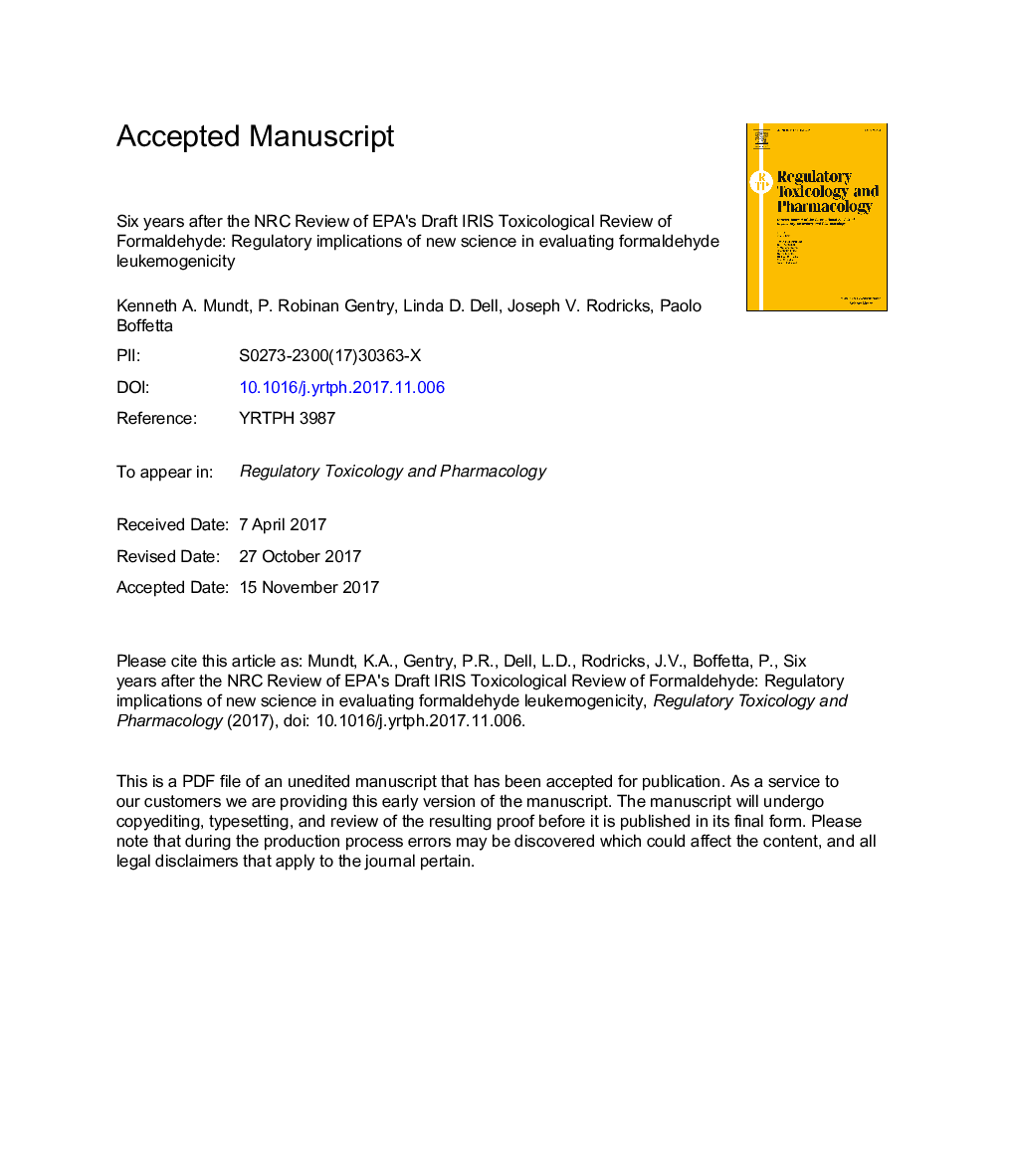| Article ID | Journal | Published Year | Pages | File Type |
|---|---|---|---|---|
| 8551799 | Regulatory Toxicology and Pharmacology | 2018 | 70 Pages |
Abstract
Shortly after the International Agency for Research on Cancer (IARC) determined that formaldehyde causes leukemia, the United States Environmental Protection Agency (EPA) released its Draft IRIS Toxicological Review of Formaldehyde (“Draft IRIS Assessment”), also concluding that formaldehyde causes leukemia. Peer review of the Draft IRIS Assessment by a National Academy of Science committee noted that “causal determinations are not supported by the narrative provided in the draft” (NRC 2011). They offered recommendations for improving the Draft IRIS assessment and identified several important research gaps. Over the six years since the NRC peer review, significant new science has been published. We identify and summarize key recommendations made by NRC and map them to this new science, including extended analysis of epidemiological studies, updates of earlier occupational cohort studies, toxicological experiments using a sensitive mouse strain, mechanistic studies examining the role of exogenous versus endogenous formaldehyde in bone marrow, and several critical reviews. With few exceptions, new findings are consistently negative, and integration of all available evidence challenges the earlier conclusions that formaldehyde causes leukemia. Given formaldehyde's commercial importance, environmental ubiquity and endogenous production, accurate hazard classification and risk evaluation of whether exposure to formaldehyde from occupational, residential and consumer products causes leukemia are critical.
Keywords
Related Topics
Life Sciences
Environmental Science
Health, Toxicology and Mutagenesis
Authors
Kenneth A. Mundt, P. Robinan Gentry, Linda D. Dell, Joseph V. Rodricks, Paolo Boffetta,
